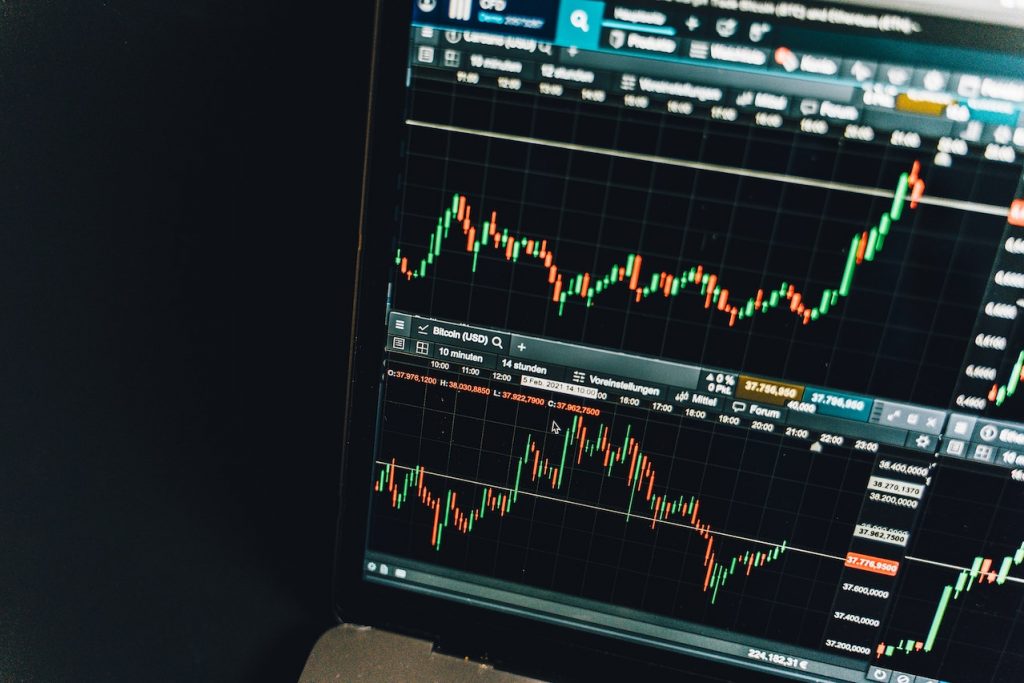A price pattern is a configuration of price movement characterised by a distinct shape. Price patterns repeatedly occur throughout history and across all timeframes, providing essential clues to traders about future market direction.
In technical analysis, stock traders use price patterns to anticipate future market movements. By understanding how prices have moved in the past, traders can gain valuable insights into how they are likely to move in the future.
Price patterns are created by the market’s interaction of supply and demand. When buyers outnumber sellers, prices rise. When sellers outnumber buyers, prices fall. The price patterns that emerge from this interplay of supply and demand reveal important clues about the underlying psychology of market participants.
Price patterns are valuable for stock traders because they can help anticipate future market movements. By understanding how prices have moved in the past, traders can gain valuable insights into how they are likely to move in the future. For those interested in starting, check this link here.
Reversal patterns
Reversal patterns indicate a change in trend direction. The most common reversal pattern in technical analysis is the head and shoulders pattern, which is considered a bearish reversal. The head and shoulders pattern gets its shape when there is a sharp price decline followed by a consolidation period followed by another sharp price decline. This pattern suggests that the current trend is about to reverse, and prices are likely to fall.
Other common reversal patterns include the double top and the double bottom. In contrast, the double top is a bearish reversal pattern created when prices peak and then retrace back to the original peak level, at which point prices start to decline. The double bottom can become a bullish reversal pattern created when prices trough and then retrace back to the original trough level, at which point prices start to rise.
Continuation patterns
Continuation patterns are an indication that the current trend will continue. The most common continuation pattern is the flag pattern, created when prices consolidate after a sharp price move. This pattern suggests that prices will continue moving in the same direction as the initial price move.
Other common continuation patterns include the pennant and the wedge. The pennant is created when prices consolidate after a sharp move in either direction. This pattern suggests that prices will continue moving in the same direction as the initial price move. The wedge is created when prices consolidate in a downward-sloping triangle after a sharp price decline. This pattern suggests that prices are likely to continue falling.
Bullish engulfing patterns
The bullish engulfing pattern is a reversal pattern created when a significant price increase follows a slight price decline. This pattern suggests that prices are about to start rising.
Bearish engulfing patterns
The bearish engulfing pattern is a bearish reversal pattern created when a significant price decline follows a slight price increase. This pattern suggests that prices are about to start falling.
Pennants
The pennant is created when prices consolidate after a sharp move in either direction. This pattern suggests that prices will continue moving in the same direction as the initial price move. Pennants are continuation patterns that occur when a sharp move in price is followed by a period of consolidation. This consolidation forms a symmetrical triangle, typically lasting for 1-3 weeks. The Pennant pattern is considered a bullish continuation pattern, suggesting that prices will continue to rise after the period of consolidation.
To confirm that a Pennant pattern is valid, traders typically wait for a breakout above or below the triangle. A breakout above the triangle suggests that prices will continue to rise, while a breakout below the triangle suggests that prices will continue to fall. Traders can use the size of the Pennant pattern to determine the potential size of the price move after the breakout.
Conclusion
Price patterns are valuable tools for stock traders because they can help anticipate future market movements. By understanding how prices have moved in the past, traders can gain valuable insights into how they are likely to move in the future. Novice traders should become familiar with the most common technical analysis and price patterns to help them make more informed trading decisions and use a reputable broker such as Saxo Bank.

